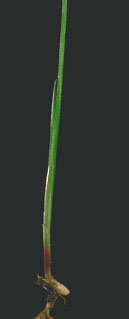It is helpful to differentiate between growth and development. Growth is an increase in biomass, whether for a leaf, plant, or grassland. Growth rate varies over time and depends on the life cycle of the plant, its environment, and the management imposed. Development, in contrast, is the passage through life cycle phases.
For forage grasses, the life cycle is divided into developmental phases: vegetative, transition, and reproductive. The vegetative phase is characterized by meristems producing leaves. The transition phase produces an elevation of the apical meristem, while the reproductive phase centers around meristems producing flowers.
In the vegetative phase, which begins at germination and continues through tillering, the tissues of growth (meristems) are busy producing leaves. This is important because sufficient leaf surface area is needed to capture sunlight and continue photosynthesis. Good leaf development eventually implies roots are being established. When a plant has enough leaves for photosynthesis and roots for anchoring, storage, and uptake of minerals then grazing and mowing management can be considered. The late vegetative stage is a valuable phase for harvesting forage.
Farmers in the Plains states commonly graze wheat during the vegetative stage. However, they closely monitor shoot development by splitting a shoot longitudinally to locate the growing point and determine the onset of internode elongation. Livestock are removed at the first sign of culm development.

Monocot

